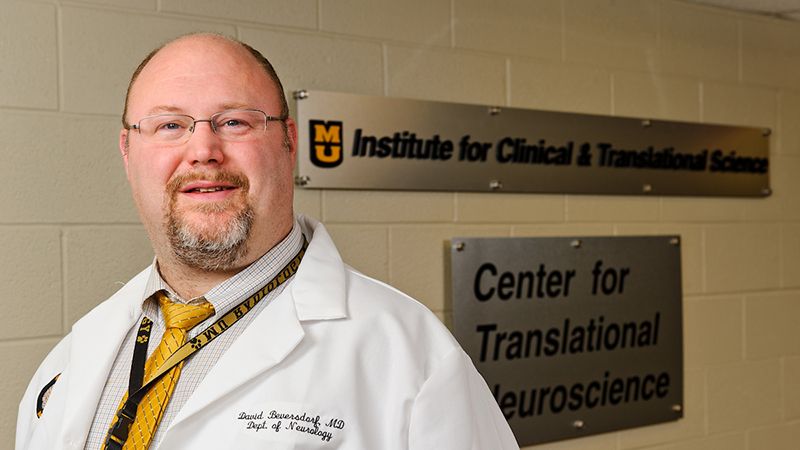
Stress response is the body’s normal physiological reaction to a situation it perceives as threatening. However, stress can also affect important aspects of thinking, including problem-solving. Researchers from the University of Missouri School of Medicine and the MU Thompson Center for Autism and Neurodevelopment have discovered a potential indicator of how stress affects the brain and alters its ability to solve problems. These findings could ultimately help understand and optimize treatment for patients suffering from stress-related illnesses.
The results come from two companion studies involving 45 healthy college-age people. They were genetically tested for the presence of at least one copy of a variation in the serotonin transporter gene (SERT), which is associated with greater susceptibility to stress. Participants were given a series of tests while being monitored by magnetic resonance imaging (MRI). The first test involved verbal processing tasks in which participants were asked in two sessions (stress and no-stress control) how many items from a category they could name in a minute. Researchers found that stress did not affect overall performance regardless of gender or gene group. But stress did relate to changes in the brain’s overall functional connectivity in all participants, suggesting the brain could provide a biomarker for the effects of stress on cognition.
“This may begin to help us understand what is going on in the brain when stress is affecting cognition,” said supervising investigator David Beversdorf, MD, professor of radiology, neurology and psychology at the MU School of Medicine. “If we can develop an intervention that affects the brain’s networks, we may be able to mitigate the cognitively impairing effects of stress.”
In the other study, the same participants completed problem-solving tasks in two sessions (stress and no-stress control) during MRI testing. Researchers discovered changes to the connections involving a section of the brain called the middle temporal gyrus related to changes in performance during stress. This relationship depended on the presence or absence of the stress-related variant of the SERT gene, indicating a potential specific brain marker associated with susceptibility to stress during problem-solving.
“When you look at the relationship of the imaging changes in the brain and the performance changes resulting from stress, the left middle temporal gyrus appears to be a critical hub, and this relationship depends on an individual’s genetic susceptibility to stress,” Beversdorf said. “The next step is to look at this in specific patient populations. Is this effect greater in PTSD populations or test anxiety patients? And if we can understand how to mitigate those effects, it could be very helpful to these patients.”
In addition to Beversdorf, the study authors include former University of Missouri Interdisciplinary Neuroscience Program graduate student and lead author Neetu Nair, PhD, now a postdoctoral fellow in the Department of Psychiatry at University of Missouri School of Medicine; Bradley Ferguson, PhD, assistant research professor of health psychology; and Shawn Christ, PhD, associate professor, Department of Psychology. Other collaborators include John Hegarty, PhD, a former graduate student in the Interdisciplinary Neuroscience Program and now a postdoctoral research fellow at the Stanford Autism Center; Patrick Hecht, PhD, also a former graduate student in the Interdisciplinary Neuroscience Program; and Michael Tilley, PhD, assistant professor of biology at Central Methodist University.
The study, “Effects of stress on functional connectivity during verbal processing,” was recently published in the journal Brain Imaging and Behavior. The companion study, “Effects of stress on functional connectivity during problem solving,” published in the journal NeuroImage. Research reported in these publications was supported by a grant from the University of Missouri Research Board and the University of Missouri Mission Enhancement Fund. The authors of the study declare that they have no conflicts of interest related to this study. The content is solely the responsibility of the authors and does not necessarily represent the views of the funding agencies.





